“If you can imagine it, you can achieve it; if you can dream it, you can become it.” American author and scholar William Arthur Ward’s often cited quote aptly describes the type of ‘blue sky’ thinking that is driving technological advancements on the ground these days.
But just because you can imagine it, doesn’t necessarily mean you can achieve it in commercial aircraft cabins. Visionaries are not only inhibited by the physical constraints of the metal tube, but they must also grapple with long development lead times and laborious – though necessary – certification hurdles. The pace at which they can bring new products onboard is also dictated by when or even if airframers permit them to interface with their intellectual property.
In short, by the time a great new product is installed on aircraft, it is no longer new, and is often unfavourably compared to the latest products available to consumers. Thankfully, that doesn’t stop designers, interiors firms and inflight entertainment and connectivity (IFEC) specialists from innovating, but it does mean that change in the cabin is more of an evolutionary process rather than, say, a revolutionary one.
Below, we’ve highlighted just a handful of the latest innovations poised to make their mark in the cabin.
Interiors
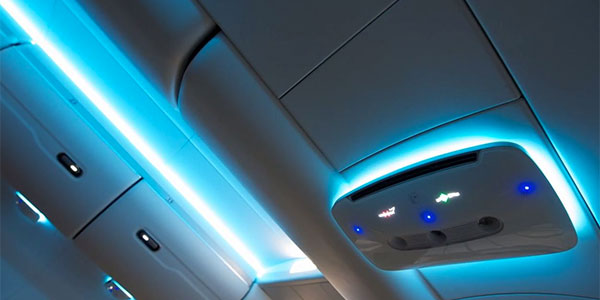
Zodiac Aerospace says it has undertaken a “complete reimagining” of the cabin with its Innovative Space Interior System (ISIS), which boasts recyclable sidewall panels, pod-like passenger service units (PSU) with easy-to-use interfaces, and clam shell overhead bins. On the surface, passengers will see cleaner lines, a more modern aesthetic and increased space for baggage. But it could be argued that the true reimagining here is in the modular nature of ISIS and the fact that it dramatically reduces part numbers – from 11 to four – which is, of course, meaningful to airlines. Zodiac has already won contracts to retrofit ISIS to both Airbus and Boeing narrowbodies, and Delta Air Lines has selected ISIS to refresh the cabins of its A319/A320 fleet. But it will unveil a widebody version of ISIS in April.
The French manufacturer’s big reveal is timely; Boeing is currently considering options for its new 777X interior. The airframer tells us it will build on “the passenger-preferred interior of today’s 777”, apply 787 interior innovations and draw on many of the latest technologies “to deliver an all-new passenger experience”. Airbus, meanwhile, is developing a new interior for the A320, which features a new overhead pivot bin solution that will offer more room for passengers’ bags.
While Airbus, Boeing, Zodiac and other industry giants have broad plans for the next generation of aircraft cabins, smaller interiors firms are innovating in ways that could more intimately impact the passenger experience, especially for those of us sitting in economy class.
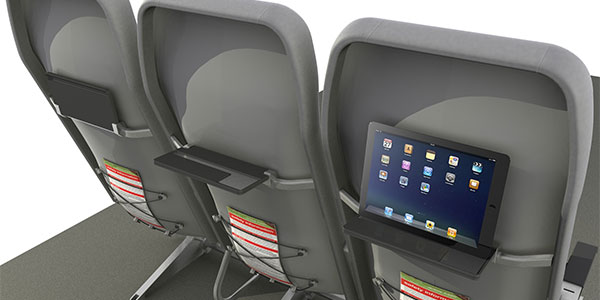
UK firm Acro Aircraft Seating, for instance, has designed and manufactured a tray table shelf that facilitates the easy viewing of passengers’ own personal electronic devices (PEDs). The simple solution, which is targeted at the low-cost market, includes a reduced sized tray table with a slot to support a tablet, plus a recess for a drink. The slot, quite simply, “stops the thing from sliding off the table”, explains Acro commercial director Cameron Allan.
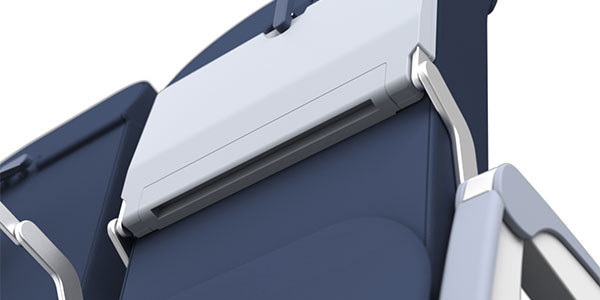
Another company that is ‘getting groovy’ with tray tables is SmartTray International, which has already received a fair amount of press for its simple groove-within-a-tray table, called X1. The design has been updated so that the groove is no longer static, but rather rotates to ensure that it can “self-clean” by gravity. SmartTray’s X2 concept, also recently modified, allows passengers to stow and view their tablets in a frame within the tray table during any phase of flight. A hybrid of X1 and X2 – which combines the rotating groove with the stowage properties of X2 – will be unveiled in April, says company Founder, President and CEO Nick Pajic.
Onboard services
Taking a long-standing product onboard aircraft and significantly improving upon it is what LSG’s Spiriant unit accomplished when it started rolling out its Quantum lightweight trolley on Lufthansa and other airlines. Quantum “is plastic composite and compared to aluminium trolleys, is much lighter, more environmentally friendly and the attendants on board like it”, says Spiriant Managing Director Alexander Spahn. While Quantum represents Spiriant’s biggest project, the unit has designed more than 1,000 products in all – from tableware and textiles to comfort items and amenity kits. “The passenger is always in the focus,” says Spahn, and seemingly small touches that underlie the personality of the airline can make a big difference to the passenger experience.
IFEC
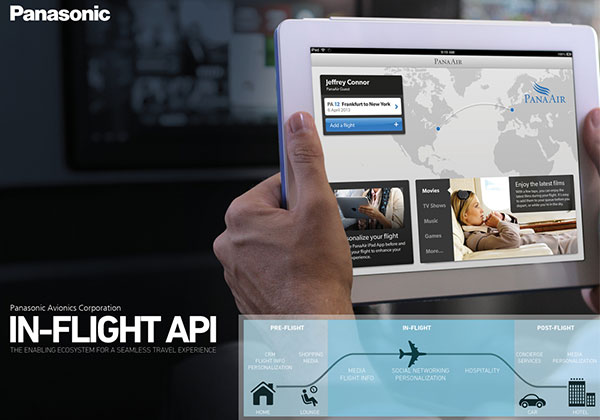
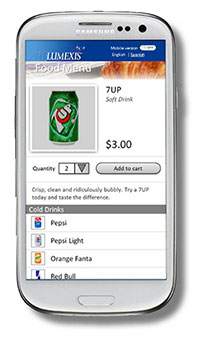
In the IFEC space, Panasonic Avionics believes the best way to stay ahead of the curve is to embrace the open platform development community to unlock the potential of its Android-based IFEC systems. The manufacturer’s new ‘In-flight API’ solution allows airlines and third?party developers to leverage all of Panasonic’s air and ground?side services through an open HTTP architecture. So, for instance, an airline could “choose to develop their own application, which changes states when you get on board, signs onto a local Wi-Fi network and synchronises you with your seat. Now you start to have a personalised, curated experience while you’re watching the big screen TV,” says Panasonic Avionics Executive Director of Corporate Sales & Product Management Neil James.
Another company that sees “second screen” content augmenting the embedded IFE experience is Lumexis. Its so-called FTTS Second Screen for PEDs will feature remote control of the main screen video; moving maps; food, drink and duty free ordering; games, eBooks, weather forecasts, and other applications. Lumexis VP of Sales Jon Norris reveals that the firm is working with a number of movie studios “and hopes to demonstrate second screen content on passenger devices that is linked to the primary movie. So, for instance, tying merchandising to the film; if you like what this actor is wearing, you can buy it.”
One thing is clear – in this fiercely competitive market, companies that are keen to crack into the cabin or those trying to retain a foothold must not rest on their laurels. Tim Morgan, Co-founder and CEO of interiors firm TTF Aerospace, recently offered this advice: “You have to be outside of your comfort zone. You have to be thinking what’s new, what’s next. If you’re not doing that then look out.”
FTE Global 2014, which will take place in Las Vegas from 24-26 September, will host the ‘Cabin Integration Symposium: A deep dive exploration into the future of IFEC and interiors collaboration’. Mary Kirby, Founder and Editor of Runway Girl Network and one of the world’s foremost independent experts in IFEC business models, will moderate the Symposium, which will cut through the marketing jargon and news hype to discover exactly how airframers, airlines, interiors firms, IFE specialists and connectivity players are exploring ways to more efficiently work together and drive innovation in the cabin to keep pace with consumer trends and appetites.







